Engaging Letter Blending Activities for Kids
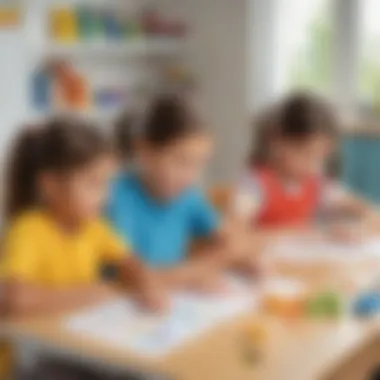
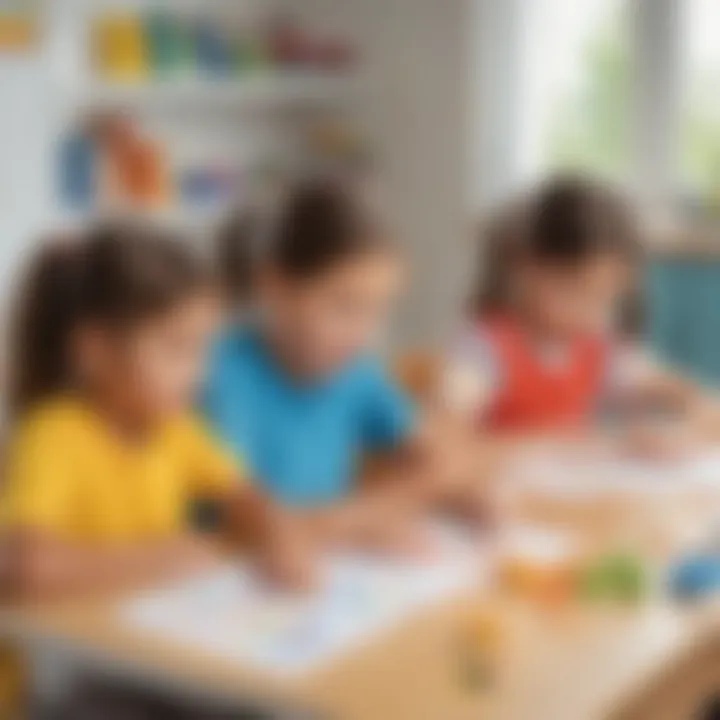
Intro
In the intricate tapestry of early childhood education, letter blending emerges as a vital thread that weaves together a child’s phonemic awareness and reading abilities. This sets the stage for more complex literacy skills that children will encounter later in their academic journeys. Within this framework, it’s essential for educators and caregivers to understand not just the significance of blending letters, but also how to effectively implement engaging activities that facilitate this process.
Letter blending is not merely a collection of exercises; it's about creating a rich, interactive environment where young learners can explore sounds and letters through play and creativity. As the foundational skills of reading develop, so too do a child's confidence and enthusiasm for learning.
As we venture further into this guide, we will delve into a variety of innovative activities designed to captivate young minds, instill a love for reading, and bolster phonemic understanding. Each section will explore methodologies, practical applications, and the undeniable cognitive advantages these activities yield, ensuring that both classroom environments and homes can become vibrant learning spaces.
Creative Activities
Engaging young learners through creative activities is pivotal in reinforcing letter blending concepts. Crafting, constructing, and collaborating not only makes learning fun but also fosters a deeper understanding of language.
Craft Ideas
Here are some imaginative craft activities that children can easily replicate, enhancing their letter blending skills:
- Letter Collage: Provide children with old magazines or colored paper. Ask them to cut out letters and images, and then create a collage that spells a word by blending different letters together.
- Sound Boxes: Use small boxes or containers and fill them with objects that start with different letters. As children explore each box, encourage them to blend the letters and sounds associated with the objects inside.
- Blend Monsters: Get some colored paper and scissors to make blend monsters! Each monster can have a name made from blended sounds, and children can decorate them as they learn.
Step-by-Step Guides
Here’s a step-by-step guide for creating the Letter Collage:
- Collect magazines, scissors, glue, and a large sheet of paper.
- Help children identify letters they want to use.
- Encourage them to cut out letters and pictures that correspond with these letters.
- Arrange the cutouts on the large sheet and glue them in place.
- Discuss the sounds each letter makes and how they blend.
Educational Value
Engaging in these crafting activities doesn’t come without benefits. They not only solidify phonemic awareness but also help develop fine motor skills, encourage creativity, and promote teamwork among peers. When children see their creations, they take pride in their accomplishments and learn through their artistic expressions, reinforcing knowledge in a meaningful way.
Fun Quizzes
Quizzes and interactive challenges provide another layer of engagement for children as they learn about letter blending. They create a fun atmosphere that encourages knowledge retention and application.
Quiz Topics
The quizzes available on platforms like ElemFun cover a variety of topics, such as:
- Initial sounds and letter combinations
- Vowel blends and digraphs
- Word families and rhyming words
Question Types
The variety of question types keeps children on their toes and excited about learning. Examples include:
- Multiple-choice questions
- Fill-in-the-blank exercises
- Matching games
- Visual prompts where children identify objects
Knowledge Reinforcement
When quizzes are used regularly, they serve as a powerful tool for reinforcing learning. By assessing what they know and what areas might need more attention, both educators and parents can tailor instruction to fit each child’s individual needs.
Fact-Based Articles
Reading articles that present facts in an engaging manner can supplement dynamic activities and quizzes effectively.
Topics
The variety of topics covered in resources such as educational articles can include:
- The importance of phonemic awareness
- Best practices for teaching letter blending
- Fun facts about how we learn to read
Engaging Content
These articles often use stories and examples that are easy to understand, helping children relate to the information personally. Broken down into digestible sections, they captivate readers’ attention and make learning seamless.
Prelude to Letter Blending
Letter blending is a foundational skill in early literacy development that plays an integral role in helping young learners navigate the world of reading. This essential concept involves the skill of merging individual letter sounds to form words. It serves as a bridge, connecting isolated letters to their phonetic sounds and culminating in the ability to read words fluently. By emphasizing letter blending, educators can foster a rich understanding of language, paving a smooth path toward literacy.
In discussions about letter blending, it is crucial to appreciate its multifaceted benefits. It not only aids children in recognizing letters and sounds but also sharpens their listening skills, enhances memory, and boosts cognitive development. Parents and educators who prioritize letter blending activities can nurture a child’s confidence in reading and ultimately set the stage for their lifelong learning journey.
Defining Letter Blending
At its core, letter blending is the process where individual sounds are combined to create a cohesive word. For instance, when children hear the sounds for the letters ‘c’, ‘a’, and ‘t’, they learn to blend these sounds together to articulate the word “cat.” This approach to phonetics is not merely mechanical; it involves a critical understanding of how sounds work in concert, enriching a child’s linguistic capabilities.
Through various activities designed to promote letter blending, children engage their curiosity and creativity. They learn to recognize patterns and make connections between letters and their respective sounds in a lively and interactive manner. While many young learners might initially struggle with this, consistent practice gradually builds their confidence and proficiency.
Importance in Early Literacy
The landscape of early literacy is broad, and letter blending is a vital component that underpins this foundation. When children grasp the concept of blending letters, they develop a deeper awareness of phonemic structures. This awareness is essential for reading fluently and understanding written text. Moreover, it enriches vocabulary acquisition and reading comprehension skills.
Importantly, the effects of mastering letter blending ripple across various domains. Children not only enjoy the mechanics of reading but also experience the joy of storytelling. They become more engaged with texts, empowering them to explore imaginative worlds and share their interpretations with peers and caregivers.
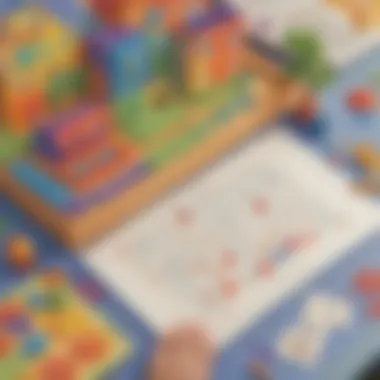
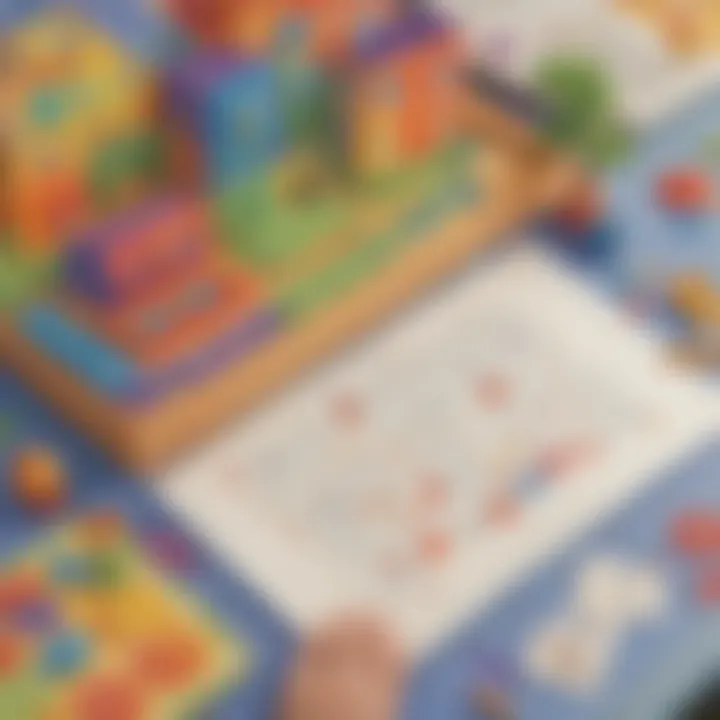
Consider the following points:
- Letter blending supports spelling, enabling children to construct words accurately.
- It enhances phonological awareness, allowing learners to hear and manipulate sounds more effectively.
- Engaging in blending exercises sparks an intrinsic motivation to read.
In summary, letter blending is more than a set of discreet phonetic skills. It is a gateway through which educators and parents can inspire a love for literacy and provide children with the tools they need for academic success and personal exploration.
Phonemic Awareness and Its Role
Phonemic awareness is a foundational skill in the realm of reading and literacy, particularly for young learners. It's more than just a fancy term; it embodies the ability to recognize and manipulate the sounds in spoken words. This skill forms the bedrock on which other reading abilities are built. Without a solid grasp of phonemic awareness, kids might find themselves struggling further down the line.
For teachers and parents, understanding phonemic awareness is crucial for guiding young students toward successful reading experiences. Engaging in activities that foster this type of awareness can set the stage for better phonics instruction and eventually fluent reading.
As we navigate through this section, consider the broad benefits: enhancing vocabulary, improving spelling, and, ultimately, boosting comprehension. These are not just incremental gains but crucial stepping stones in a child’s educational journey.
Understanding Phonemic Awareness
Phonemic awareness is often mistaken for phonics, but they are distinct concepts. Phonemic awareness is the auditory skill of recognizing and manipulating the individual sounds, or phonemes, in words, while phonics involves connecting those sounds to their written representations.
Imagine a child hearing the word "cat." Without phonemic awareness, they may not discern the separate sounds: /k/, /æ/, and /t/. A child with good phonemic awareness would easily separate those sounds and might even be able to blend them back together to say the word. Developing this ability is essential for literacy, as it makes recognizing and pronouncing new words much easier.
Some effective ways to build phonemic awareness include:
- Rhyming games: Start with simple rhymes and gradually introduce more complex ones.
- Sound segmentation: Have children clap for each sound in a word, emphasizing how many phonemes they can identify.
- Phoneme manipulation: Engage in activities where children change one sound in a word to make a new word, such as changing the /c/ in "cat" to /h/ to create "hat."
These activities reinforce the idea that phonemes are the building blocks of words and not just abstract concepts.
Connection to Letter Blending
The link between phonemic awareness and letter blending is a tight-knit one. Think of phonemic awareness as the key that unlocks the door to letter blending. When children learn to identify and manipulate sounds, they become ready to connect those sounds with their corresponding letters. This paves the way for successful blending, which is the process where children combine individual sounds to form complete words.
When blending letters, children translate what they hear into what they see. For instance, when they hear /k/, /æ/, and /t/, they can blend that into the letters C-A-T. This connection is not merely a coincidence; it's a developing literacy skill that builds with practice.
Here are some notable points to consider regarding this connection:
- Phonemic awareness enhances decoding skills: Better sound awareness leads to stronger blending abilities, which are critical for reading fluency.
- Fosters independent reading: As children grasp phonemes and their corresponding letters, they gain confidence to tackle new words independently.
- Engages cognitive processes: It promotes active engagement of the brain, aiding retention and understanding by prompting learners to think critically about sounds and their spellings.
In summary, fostering phonemic awareness is a vital part of enhancing students’ letter blending abilities. By creating an environment rich in sound recognition and manipulation, educators and parents alike can significantly impact literacy development for young learners.
"Phonemic awareness isn't just a skill—it's the backbone of successful reading, linking speech and print seamlessly together."
For further reading:
Engaging children through letter blending activities grounded in robust phonemic awareness will undoubtedly prepare them for a future of productive reading and writing.
Types of Letter Blending Activities
Understanding the various types of letter blending activities is essential for anyone involved in early childhood education. These activities not only cater to different learning styles but also tap into the diverse ways that young learners can make sense of letters and sounds. By implementing a mix of visual, auditory, and interactive activities, educators can create a holistic learning environment that keeps children engaged while enhancing their phonemic awareness and reading abilities. Let's explore these categories further.
Visual Blending Activities
When it comes to visual learning, using images can be a game changer. Visual blending activities involve incorporating imagery that corresponds with specific sounds or letters. Examples include using flashcards with pictures that represent words, like a picture of a "cat" alongside the letters C, A, and T. This method allows children to see the relationship between the individual letters and the overall word, reinforcing their understanding.
- Color-Coded Letters: Assign colors to different letters or blends, making patterns that are visually stimulating. This helps young learners associate sounds with colors, enhancing retention.
- Word Walls: Create a dedicated wall space in the classroom with images and words. Letting children periodically contribute by adding new words they learn encourages collaboration and reinforces visual learning.
Effective visual activities not only support letter recognition but can also serve as creative outlet for children. Encouraging kids to draw their representations of words can help solidify their memory. This approach can transform a standard lesson into a fun, arts-and-crafts session.
Auditory Blending Exercises
Auditory blending is equally crucial for developing reading skills in young learners. These exercises focus on sound recognition and manipulation, promoting an understanding of phonemes through listening. Common auditory activities include clapping to syllables or using songs for blending sounds.
- Sound Sorting: Present various items or images and have students categorize them based on initial, medial, or final sounds. This not only enhances phonemic awareness but also hones their ability to discriminate between similar sounds.
- Phoneme Games: Engage children with games like "I Spy" using sound prompts. For instance, "I spy with my little eye something that starts with the /b/ sound." This can be both entertaining and educational.
Children often find joy in hearing phrases repeated rhythmically. Using rhymes or chants can lay the foundation for strong phonemic awareness, while also making learning more delightful.
Interactive Digital Tools
In the digital age, integrating technology into letter blending activities can appeal greatly to tech-savvy young learners. Interactive digital tools not only foster engagement but also adapt to varying learning paces and styles. Here are some effective options:
- Educational Apps: Applications like Starfall or ABCmouse.com offer interactive lessons that promote letter blending through games, stories, and exercises designed specifically for children. This allows for practicing at their own pace, and children often enjoy the responsive feedback these platforms provide.
- Online Games: Websites such as Starfall.com or phonicsplay.co.uk provide engaging games where students blend sounds to create words. With colorful graphics and fun sound effects, these platforms captivate attention, making learning an enjoyable experience.
With interactive tools, it's important to balance screen time with traditional tactile activities. A mixed approach can cater to diverse learning environments, ensuring that students not only understand blending but can also apply it. Incorporating digital resources can expand the scope of instruction, making lessons more accessible.
Important Note: Always ensure the digital tools used are age-appropriate and educational to yield productive outcomes.
By tapping into visual, auditory, and digital methodologies, educators can provide a rich tapestry of learning experiences. This multi-faceted approach not only enhances phonemic awareness but also cultivates a love for reading in young learners.
Engaging Young Learners
Engaging young learners in letter blending activities is not just about teaching them to read; it’s about igniting a passion for language and fostering cognitive skills that they will carry throughout their lives. The primary aim here is to create an environment where children feel excited about learning. When kids become curious and involved in their own educational journey, the outcomes can be significantly enhanced. By tapping into their innate curiosity and love for exploration, educators and parents can make letter blending a delightful experience.
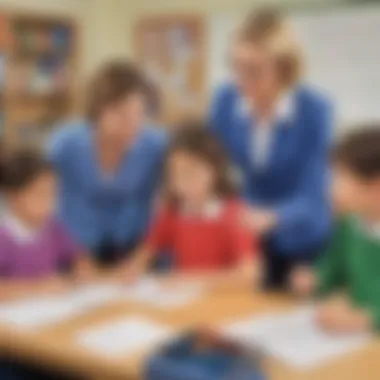
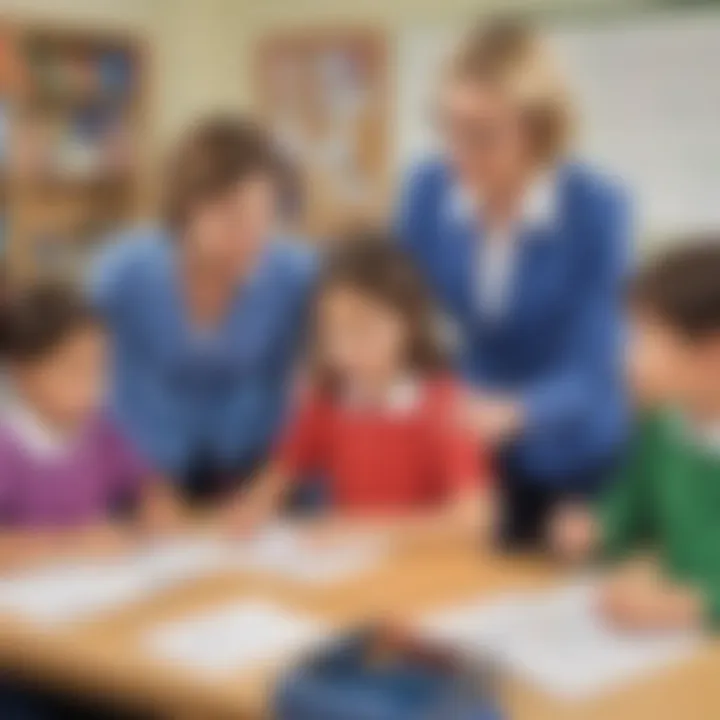
Creating a Positive Learning Environment
A positive learning environment serves as the foundation for effective teaching and learning. It is crucial for nurtuirng not only academic skills but also emotional growth. Children tend to thrive when they feel safe and valued, allowing them to express themselves freely. Here are some key considerations:
- Warmth and Support: Create a space that feels welcoming and encouraging. Use positive reinforcement techniques, like praise for effort, to motivate students. When children know that their hard work doesn't go unnoticed, they are more likely to engage actively.
- Structured Freedom: Allowing children to explore activities related to letter blending on their own helps foster independence. For example, a teacher might set up a corner with letters of the alphabet where kids can freely build words using magnetic letters or blocks.
- Collaborative Learning: Initiate group activities where kids can work together. This promotes social skills and group dynamics. For instance, pairing students for letter blending games not only aids individual learning but also facilitates teamwork.
Creating a positive atmosphere also encompasses being mindful of the variety of learners in the classroom. Some kids may prefer quiet one-on-one activities, whereas others might relish a bustling group environment. Therefore, balancing these dynamics can keep engagement levels high.
"A safe and engaging space is the magic glue that binds learning and curiosity together."
Using Games and Hands-On Activities
Games are a natural fit for young learners; they bring energy and motivation into the classroom. Using games and hands-on activities for letter blending does more than make learning fun; it helps solidify understanding in an interactive way. Here’s how these methods can be effective:
- Interactive Board Games: Develop games that incorporate letter blending, where kids can advance by spelling out simple words or blending sounds. This keeps the learning process engaging and gives children a sense of achievement when they progress through the game.
- DIY Activities: Encourage creativity and critical thinking by having students create their own letter blending tools, such as flashcards with pictures that represent different sounds. This way, they are physically engaging with the letters and making personal connections to the activities.
- Story-Based Games: Incorporate stories that relate to letter blending. For instance, if you’re blending the sounds of "cat," create a mini story where kids can act it out. This kinesthetic approach reinforces learning through movement and creativity.
Combining these hands-on games with well-structured learning objectives can transform standard lessons into memorable experiences that keep young learners eager to explore more about language and reading.
Strategies for Effective Implementation
Implementing letter blending activities effectively is pivotal for enhancing reading skills in young learners. The strategies adopted not only help in embedding these activities into daily routines but also ensure that they resonate with the children's varied learning preferences. By focusing on the nuances of effective integration and tailored adaptations, educators can foster a more dynamic learning environment that promotes literacy skills.
Integrating into Lesson Plans
When it comes to lesson planning, it’s crucial to weave letter blending activities seamlessly into the existing curriculum. This integration does more than just enhance phonemic awareness; it allows teachers to build on students’ previous knowledge, thereby creating a more cohesive learning experience.
For instance, a teacher might initiate a lesson centered around the letter 'B'. Start with a brief discussion about objects that begin with the letter, like ball, bat, or banana. Subsequently, the teacher can move to a blending activity where children combine sounds to spell simple words like bat by blending individual sounds ( /b/ + /a/ + /t/). This not only maintains engagement but also solidifies their understanding of letter sounds in a fun, meaningful way.
To keep activities fresh and engaging, consider varying the type of blending practices. Here are some suggestions:
- Small Group Work: Foster opportunities for peer-to-peer interaction, where students can practice blending together.
- Interactive Whiteboards: Use technology to display letters and words, enabling students to blend sounds visually.
- Thematic Units: Design activities around themes (e.g., animals, seasons) to make learning both fun and relevant.
Adapting for Different Learning Styles
Every child learns in their own unique way, and adapting letter blending activities to meet diverse learning styles can be a game-changer. Recognizing that some kids are visual learners while others may excel through auditory or kinesthetic methods ensures that all students can participate meaningfully.
- Visual Learners: Use colorful images and alphabet charts. Visual aids help to connect sounds with letters, making the blending process clearer. For example, pictures of animals that start with the target letter can illustrate the blending concept effectively.
- Auditory Learners: Incorporate songs or chants that emphasize phonemes and blends. Singing or rhythmic patterns can aid retention and make learning more enjoyable.
- Kinesthetic Learners: Engage children with physical activities related to blending. For example, using letter tiles or blocks allows kids to manipulate letters and sounds, reinforcing learning through touch and movement.
As educators consider adaptation strategies, they might keep an eye on interactions and responses from each child, ensuring all needs are met. Asking open-ended questions can encourage engagement and provide critical insight into which strategies work best for each child.
“The key is flexibility, recognizing that no single approach works for every student, and having the willingness to pivot as needed.”
Incorporating these strategies into daily lesson plans and tailoring activities to individual learning styles can significantly enhance the overall effectiveness of letter blending activities. By being mindful of these elements, educators not only help young learners grasp basic reading skills but also cultivate a love for learning that can last a lifetime.
Challenges and Solutions
Incorporating letter blending activities into early education is a vital but not always smooth path. Recognizing and addressing the challenges is crucial for fostering an atmosphere where young learners can thrive. This section focuses on the specific elements that can hinder children's mastery of letter blending and provides actionable strategies to overcome these obstacles. The goal here is not only to highlight issues but also to equip educators and parents with the tools necessary to navigate these challenges effectively.
Common Obstacles in Learning
Understanding the hindrances young learners might face while mastering letter blending is important. These obstacles vary widely and can have a significant impact on a child’s learning curve. Here are some prevalent issues:
- Lack of Phonemic Awareness: If children struggle to hear and manipulate sounds in words, blending letters becomes a steep hill to climb for them.
- Limited Vocabulary: A restricted vocabulary may steer the child away from recognizing familiar sounds and patterns, making blending a tedious task.
- Attention Span: Young learners often have short attention spans, which can lead to disengagement from blending activities.
- Emotional Barriers: Anxiety or fear of failure can leave children feeling overwhelmed, obstructing their progress and willingness to participate in reading activities.
"Never underestimate the power of a little encouragement; it can turn a child's frustration into fascination."
Strategies for Overcoming Hurdles
Tackling these challenges requires a blend of patience, creativity, and structured approaches. Here are some effective strategies to promote letter blending and support children through obstacles:
- Enhance Phonemic Skills:
- Build Vocabulary:
- Create an Inviting Learning Environment:
- Address Emotional Needs:
- Incorporate Movement:
- Engage in phonemic games that focus on sound manipulation. For example, using rhyming activities helps in recognizing sound patterns.
- Use visual aids like flashcards to associate sounds with letters more effectively.
- Read together regularly to expose children to new words. Make it a fun activity by choosing stories that incorporate lots of catchy sounds and rhymes.
- Make vocabulary building a part of play, using everyday items to associate words with visuals.
- Set up a space that minimizes distractions, making it comfortable and encouraging for the child to focus on learning.
- Incorporate engaging resources like educational games or technology, which can capture their interest.
- Communicate openly with children about their feelings toward learning. Understanding their fears can help tailor support more effectively.
- Praise efforts rather than results to build confidence and reduce anxiety around reading.
- Integrate physical activities into blending tasks. For instance, jumping for each sound in a word can make the process lively and memorable.
- Allow for breaks when needed to keep anxiety levels low and focus high.
By recognizing common challenges and embracing a toolkit of strategies, both educators and parents can create a supportive landscape for young learners to thrive in their understanding of letter blending. Moving forward, implementation of these ideas can lead to improved reading skills in elementary school children, bridging gaps that may exist in their literacy journey.
Assessment of Progress
Understanding how to assess students' progress in letter blending activities is crucial for both educators and parents. Successful assessment methods can reveal much about a child's learning journey. It's not just about marking right or wrong answers; it's about finding out how well a child can connect sounds to letters and segmenting words into individual sounds. Incorporating meaningful assessment helps in shaping instructional strategies that cater to individual needs, fostering a nurturing educational environment.
Measuring Outcomes of Letter Blending Activities
When it comes to measuring outcomes of letter blending activities, there's a variety of approaches educators can take. The core idea is to monitor progress over time, not just in terms of immediate results but also in development over weeks and months. Some key elements include:
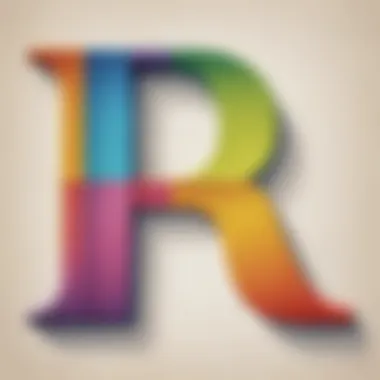
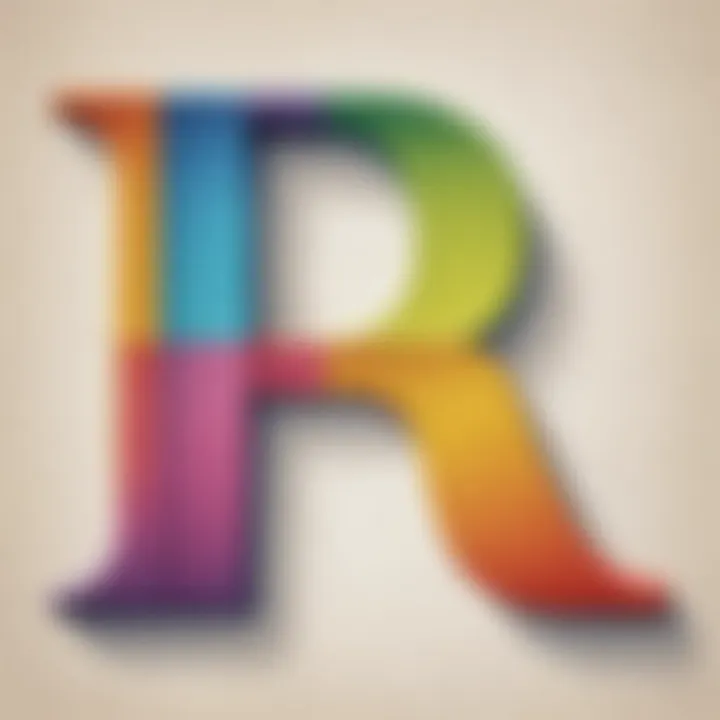
- Tracking Improvement: Regularly assess children’s ability to blend sounds together. This can be done through structured assessments, like flashcards or phoneme segmentation tasks, where children demonstrate their understanding in real-time.
- Observational Records: Write notes about children's interactions during activities. Are they able to articulate the sounds while blending? This observation can be invaluable, giving insights beyond what mere test scores can indicate.
- Incorporating Games: Through playful competitions, assess children’s blending skills while adding fun to the learning process. Games can offer an engaging way to understand each child's capabilities and confidence.
There’s a broader picture when it comes to outcomes, such as improvement in overall literacy and a child’s increasing enthusiasm for learning about letters and sounds. These indicators may not always be clear-cut but can be interpreted through multiple lenses, leading to robust educational strategies tailored to young learners.
Feedback Mechanisms for Improvement
Feedback is the glue that holds the learning process together. For young learners, it's especially important that feedback is both constructive and encouraging. Things to consider when providing feedback include:
- Immediate and Specific: When a child completes a blending activity, offer quick feedback that's clear. Instead of saying, "Good job!", a more effective approach might be, "I liked how you blended the sounds in 'cat' and made it come alive!"
- Positive Reinforcement: Recognizing achievements, even the small ones, boosts confidence. Praising a child for finding a sound correctly can make a world of difference in their engagement level.
- Guided Reflection: After activities, asking children what they felt helped or didn’t help during their exercises encourages self-reflection. Questions like, "What letters were tricky for you?" can improve their understanding of the learning process.
Essentially, effective feedback mechanisms not only aid in improving literacy skills but also nurture a love for learning among children. By engaging both parents and educators in collaborative feedback loops, they can ensure progress is continuously monitored and celebrated.
By focusing on assessment and feedback, we can create meaningful learning experiences that empower young learners in their literacy journey.
Through careful measuring of outcomes and timely feedback, both educators and parents can better support students in mastering letter blending, laying a strong foundation for future reading skills.
Parental Involvement and Support
The significance of parental involvement in a child’s literacy journey cannot be overstated. When parents actively engage in their child's education, particularly in learning activities like letter blending, the benefits can be monumental. Beyond just being a support system, parents play a pivotal role in laying a solid foundation for reading skills. They influence attitudes towards learning, making the process a more enjoyable and fulfilling experience.
Parents’ support can boost a child’s confidence significantly. When they see their parent taking an interest in activities such as blending sounds, it not only reinforces what children learn in school but also cultivates a love for reading. This familial interaction creates a nurturing environment where kids feel safe to explore and experiment with letters and sounds.
Encouraging Home-Based Letter Blending Activities
Creating a home environment that encourages letter blending activities doesn't have to be a chore; in fact, it can be an enjoyable experience for both parents and children. Here are a few strategies to consider:
- Utilize Everyday Moments: Parents can use routine activities, such as cooking or shopping, to introduce letter blending. For example, while at the grocery store, point out letters on packaging and blend them together to form words. It integrates learning into everyday life.
- Craft Fun Activities: DIY activities like making letter stickers or blending games using materials from around the house can engage children’s creativity. For instance, create a letter collage where children can stick related objects to the letters they are learning.
- Read Aloud Together: Pick children's books that emphasize phonics and blending. Reading aloud allows parents to model the sounds and help their child recognize the blending in a fun and engaging manner.
These home-based activities not only reinforce what children learn in school, but they also build cherished moments between parents and kids.
"Parental involvement is the key to opening the doors of literacy for young learners. When parents are engaged, students are more successful."
Role of Parents in Literacy Development
Parents naturally hold a critical role in their child’s literacy development, acting as the first teachers long before school even comes into the picture. The impact of parental involvement in reading and letter blending can be seen in several dimensions:
- Modeling Behavior: When parents read books or engage in letter blending, children witness firsthand the value of these activities. This modeling helps children understand that reading is an integral part of life.
- Building a Rich Literary Environment: By surrounding their kids with books, educational games, and resources, parents can help create an environment where learning is prioritized and accessible.
- Setting the Pace: When parents show patience and encouragement, they allow their children to progress at their own pace. Some kids might pick up blending more quickly than others, and having a supportive parent can ease any performance pressure.
By involving themselves actively in literacy development, parents not only enhance specific skills but also foster overall cognitive growth. They show their children that learning is a lifelong journey, and having support always makes the road smoother.
The Future of Literacy Learning
The landscape of literacy is ever-changing, driven by both advancements in educational practices and the integration of technology. As we look ahead, it becomes crucial to recognize how letter blending activities will evolve in this context. With the current push towards personalization and engagement in education, these activities are more than just foundational skills; they're a bridge to the future of effective learning. Educators and parents alike must adapt and embrace these developments, especially in enhancing young learners’ phonemic awareness and reading proficiencies.
Innovations in Educational Practices
In the realm of reading and writing, innovation is the name of the game. One of the most significant shifts in educational practices is the movement towards more individualized learning approaches. This involves tailoring instruction to meet the unique needs of each child, rather than adopting a one-size-fits-all methodology.
For instance, educators are now focusing on creating blended learning environments where traditional teaching meets digital tools. This isn’t merely about having tablets in the classroom; it's about integrating these tools meaningfully into literacy activities. By utilizing software designed to enhance letter blending skills through interactive games and assessments, teachers can provide immediate feedback and adapt instruction based on each learner's needs. This kind of responsive teaching is vital for effective literacy learning.
Some key examples of innovations in educational practices include:
- Project-Based Learning: Relating letter blending to real-world contexts can make learning more tangible. For example, students might engage in a project where they create a storybook, applying their blending skills in each step.
- Flipped Classrooms: This model allows students to explore new content at home through videos or interactive software, while classroom time is spent on hands-on blending exercises. This fosters deeper understanding and retention.
- Multisensory Approaches: Techniques that involve visual, auditory, and tactile elements help engage children’s different learning styles and reinforce letter blending through diverse methodologies.
The Role of Technology in Letter Blending
In our tech-driven world, technology serves as a powerful ally in literacy development. It not only captivates young learners but also opens up new avenues for effective instruction. Think about how applications, websites, and even social media can play a part in letter blending activities.
Digital platforms can offer engaging and interactive experiences that traditional methods sometimes lack, making phonemic awareness more enjoyable. For instance, a well-designed app might feature games where children can practice blending sounds together to form words, rewarding their progress with fun animations or sounds. There’s no shortage of creativity in these tech solutions:
- Apps like TigglyWords encourage children to physically manipulate letters to blend sounds, merging digital learning with tangible experiences.
- Reading Rockets offers a range of resources, including videos and articles, that can guide parents in helping their children practice letter blending at home using everyday items.
- Interactive Whiteboards can facilitate group blending activities where students collaborate, promoting a sense of community while they learn.
"Using technology in literacy education provides a means to increase engagement and improve outcomes, making learning an adventure rather than a chore."
The future of literacy learning is bright, and it hinges on the creative approaches educators and parents are willing to adopt. By embracing innovations and leveraging technology, young learners can not only master foundational skills but also develop a love for reading that lasts a lifetime. We must prepare them for a future where literacy is not just a skill but a critical avenue for exploration, communication, and artistic expression.
Ending
Letter blending activities play a crucial role in shaping the literacy skills of young learners. This conclusion highlights the essence and far-reaching impacts of these activities within early childhood education. Not only do they enhance phonemic awareness, but they also foster overall reading skills, laying a solid foundation for future language mastery.
Engaging children in letter blending exercises nurtures their cognitive development. Activities focused on blending sounds and letters create a dynamic learning environment where children actively participate rather than just passively absorb information. This active engagement leads to a greater retention of knowledge and skills. Furthermore, personalized experiences in letter blending can boost a child’s confidence in their reading abilities, which is invaluable from such an impressionable young age.
Parents and educators need to recognize that these activities are not just playful diversions; they are integral to the learning process. Implementing letter blending into daily routines—whether through games, songs, or stories—can weave literacy seamlessly into a child’s life, making it a natural part of their day.
Summary of Key Insights
- Letter blending enhances phonemic awareness, an essential component of early literacy.
- Engaging activities not only improve reading skills but also contribute to cognitive development.
- A supportive environment helps children feel confident as they learn to read.
- Homework and home-based letter blending activities strengthen the collaboration between parents and educators.
The road to becoming proficient readers is paved with engaging and thoughtful letter blending activities.
Encouragement for Educators and Parents
To truly harness the benefits of letter blending activities, both educators and parents must embrace creativity and flexibility in their approaches. Use everyday situations to integrate letter blending into conversations, or incorporate it into playful scenarios where children can experiment with sounds.
Educators can build lesson plans that are both structured yet adaptable; a classroom that celebrates mistakes can encourage children to speak up without fear. While parents should take an active role in literacy development at home, perhaps by creating small, innovative activities using common household items.
These combined efforts will empower children and spark their lifelong love for reading. As the saying goes, "practice makes perfect," and with consistency, encouragement, and joyful methodologies, every child can embark on their journey towards reading fluently.







